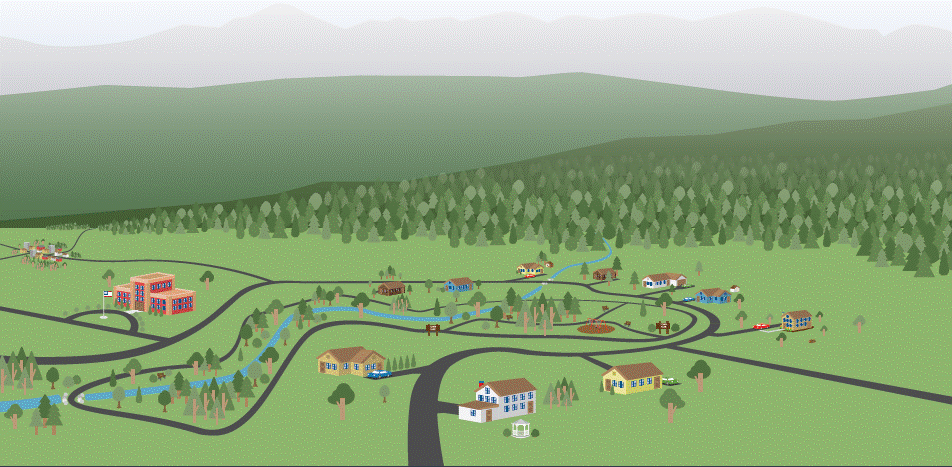Wildfire Evacuation Information

Plan, prepare and practice these simple tips that can help make leaving your home quicker, easier and safer in the event of a wildfire and reduce your risk of injury.
A wildfire may make it necessary for you and your neighbors to evacuate. Plan, prepare and practice wildfire
evacuation together and with your local emergency services. This can help save lives!
Pre-fire: plan
- Sign up to receive local emergency alerts and warnings on all home phones, cellphones and other devices.
- Know what your community’s emergency notification and evacuation plans are.
- Plan an evacuation route away from your home and other alternate routes in case the first route is closed or threatened by wildfire.
- Make sure your designated contact knows your plan and to communicate with you to know you are safe.
- Know the evacuation plans for locations where household members regularly are such as workplaces, schools and commuter routes.
- Plan to evacuate family, friends or neighbors who have disabilities.
- Maintain roads and bridges on your property and in your community if you are responsible for them. Improve roads to have 2 ways out and make them wide enough for emergency vehicles. Make sure everyone can open gated roads. Post load limits on bridges. Build culverts with materials that won’t melt.
Pre-fire: prepare
- Prepack emergency supply kits.
Back vehicles into your garage or park them in an open space facing the direction of escape. - Keep the gas tank in vehicles at least half full.
Pre-fire: practice
- Practice often with everyone in your home, using at least 2 ways out of your neighborhood.
- Participate in community wildfire drills. If something could keep you from leaving successfully, such as a locked gate, address it immediately.
- Practice evacuating animals and pets, including how to operate trailers and other vehicles needed to transport them. Know what resources are needed for their care in case of evacuation.
During a wildfire event
- Charge all cell phones in case of power loss.
- Know the local fire conditions and be prepared to leave at a moment’s notice.
- Leave early if you are concerned. It may take more time than you think to evacuate due to heavier traffic and decreased visibility, or if you have small children, pets or livestock, or have physical challenges.
- Go promptly when told to evacuate.
- Don’t drive out with trailers or large vehicles like RV’s, especially if you are unfamiliar with operating them. A stalled or abandoned vehicle makes it hard for others to leave and first responders to get into the area.
- Keep your car windows up and the air conditioning on to prevent embers and smoke from entering the vehicle.
- Continue to listen for additional evacuation instructions.
After evacuating
- Make sure that everyone is okay once you are out. If someone is injured or not feeling well, get immediate assistance.
- Inform your designated contact as soon as you are safe.
- Don’t return to your home until you are told you can safely do so.
- Follow safety guidance, including bringing in fresh water and other supplies.

